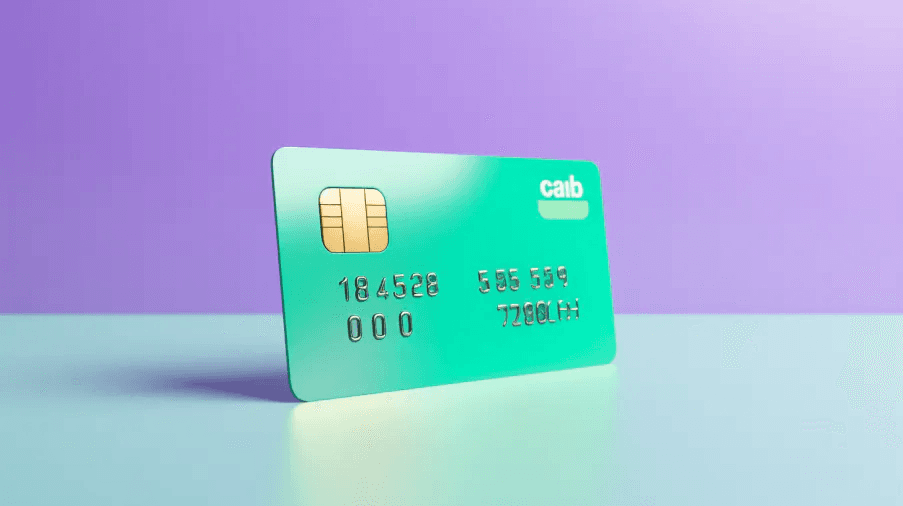Updated October 1, 2023

Mike Zaccardi, CFA, CMT
Personal Finance
If you have credit card debt, you’re not alone. According to credit reporting agency Experian, 61% of Americans have credit cards, and the average balance is $6,194. With inflation and interest rates rising, now is likely a good time to do something about your debt.
The Federal Reserve Bank of New York recently found credit card balances were seven percent higher in the second quarter of 2022 vs. the same period last year. To add insult to injury, the average annual percentage rate (APR) is currently above 18% — and it won’t be coming down anytime soon.

What to Do If You’re Trying to Pay Off One Card
Pay More Than Your Monthly Minimum
The biggest mistake most people make is paying no more than they’re required. While you might think paying the monthly minimum will chip away at your debt, much of that payment covers the interest. To pay down what you charged, search your statement for a comparison chart that shows how much interest you’ll avoid if you make larger payments. That chart will also tell you how paying more than the minimum will take your balance to zero faster.
The Advantage of Paying More

Curb Your Spending
Nothing enables impulse purchases like a credit card. Instead of continuing to rack up debt, start paying for everything with cash. You’ll find the act of handing over bills will make you question whether you need what you’re about to buy. The cash-only model can also prevent frivolous spending since you have to plan purchases to have enough cash on you.
Tighten Your Budget
Next time your review your credit card statement, check to see if your spending is organized by category. This can help you determine what you’re spending on essentials and non-essentials. If your statement doesn’t offer these insights, a service like Mint.com can categorize your total spending every month and send you email alerts. Having these breakdowns on a report can be eye-opening and might just scare you into being a more stingy spender.
Want more advice on budgeting? Check out the 5 simple ways you can save and our take on Kakeibo, the Japanese budgeting technique.
Lock Your Credit Card
Don’t trust yourself not to use your credit card as you pay down debt? You can always request your account be locked or frozen. This won’t just help you be more disciplined; it can also help your credit score in a couple of ways: you’ll keep your credit utilization ratio low (no debt being added), and you’ll add to your account age (the longer it's open, the more you benefit).
How You Should Approach Debts on Multiple Cards
Target One Card at a Time
There are two repayment strategies you could employ to attack the balances on multiple cards. Before you decide which approach is best for you, check the statements for all your cards and note the balances and the interest rates on those balances.
The avalanche method (focusing on the highest interest rate first). Aggressively paying down the debt that’s costing you the most to carry is a no-brainer. The trick is not to lose sight of your ultimate goal: eliminating all of your debt. High-interest cards with large balances can seemingly take forever to pay off, so it’s common to lose motivation. Adopting the snowball method could be a better choice if you know you need quick wins to stay on track.
The snowball method (starting with the smallest debt first). While many financial planners advise against the debt snowball method, the psychological advantage of knocking out smaller debts first could provide the momentum needed to wipe out all of your balances. With this approach, you’ll move from a $532 balance to a $1,474 balance to a $4,188 balance. Whichever debt repayment strategy you choose, you’ll need to make the minimum payment on all your cards while making a higher payment on your target card.
Explore a Balance Transfer or Loan
If you don’t want to risk paying a higher interest rate while working through your credit card balances, another way to pay down those cards is to seek out a single option that offers a lower interest rate.
Move your balances to a card with a low-interest rate (or no interest rate). Keep in mind you can sometimes incur a one-time fee of 3-5% of your total debt, so you’ll want to do the math to see if it’s in your favor. If the card has 0% interest for a limited time, you’ll want to pay off the balance before the introductory period ends — or you may find yourself again stuck with a rate you don’t like. Either way, before you commit, you should read the fine print to see if any balance transfer limits could thwart your plan. Also, maxing out your balance transfer card with the lower rate could adversely impact your credit score.
Take advantage of a home equity line of credit (HELOC). If you’re a homeowner, you may be able to borrow from your home’s equity to pay off your cards. HELOCs generally offer favorable interest rates, but you may have to pay closing costs. It’ll be in your best interests to carefully review the terms before you sign any paperwork.
Apply for a personal loan. Like a HELOC, a personal loan can provide you with the means to eliminate your credit card debt and make just a single monthly payment. Some lenders may charge fees, but many have flexible repayment timelines. Since you’re trying to eliminate debt quickly at the lowest interest rate possible, you’ll probably want to select the shortest repayment window and pay more than the monthly minimum (as suggested in the chart above). You’ll also want to ensure the loan you’re considering will cover your entire debt.
Use Windfalls to Pay Down Debt
Another way to reach a zero balance speedily is to use any raises, bonuses or other gains to chip away at your debt. While you may be tempted to splurge, pay down your debt first. Then you can use the interest you’ve avoided paying to get yourself a little something.
It’s Ok to Ask for Help
Nonprofit credit counseling organizations can provide additional guidance should you require it. They’ll evaluate your debt and income and formulate a sensible repayment plan. Many can also use their clout to secure lower interest rates and, in the event of significant debt, a reasonable debt settlement. Sometimes a settlement can hurt your credit score, so talk with your credit counselor before deciding to move forward. Most credit counseling organizations will charge a fee, but certain conditions may earn you free services or a discounted rate.
Consider Saving & Investing for Your Financial Goals
A great first step toward financial wellness is rethinking how you finance your future. Don't add to your debt — save & invest for your goals instead.
With Allio, you can save on autopilot when you use round-ups to save your spare change as you make everyday purchases. Watch your money grow with automated expert-level investment strategies.
Whether you want help saving money for a short-term goal (like a down payment on a new car), or investing for the future, Allio can help. Head to the app store and download Allio today!
Related Articles
The articles and customer support materials available on this property by Allio are educational only and not investment or tax advice.
If not otherwise specified above, this page contains original content by Allio Advisors LLC. This content is for general informational purposes only.
The information provided should be used at your own risk.
The original content provided here by Allio should not be construed as personal financial planning, tax, or financial advice. Whether an article, FAQ, customer support collateral, or interactive calculator, all original content by Allio is only for general informational purposes.
While we do our utmost to present fair, accurate reporting and analysis, Allio offers no warranties about the accuracy or completeness of the information contained in the published articles. Please pay attention to the original publication date and last updated date of each article. Allio offers no guarantee that it will update its articles after the date they were posted with subsequent developments of any kind, including, but not limited to, any subsequent changes in the relevant laws and regulations.
Any links provided to other websites are offered as a matter of convenience and are not intended to imply that Allio or its writers endorse, sponsor, promote, and/or are affiliated with the owners of or participants in those sites, or endorses any information contained on those sites, unless expressly stated otherwise.
Allio may publish content that has been created by affiliated or unaffiliated contributors, who may include employees, other financial advisors, third-party authors who are paid a fee by Allio, or other parties. Unless otherwise noted, the content of such posts does not necessarily represent the actual views or opinions of Allio or any of its officers, directors, or employees. The opinions expressed by guest writers and/or article sources/interviewees are strictly their own and do not necessarily represent those of Allio.
For content involving investments or securities, you should know that investing in securities involves risks, and there is always the potential of losing money when you invest in securities. Before investing, consider your investment objectives and Allio's charges and expenses. Past performance does not guarantee future results, and the likelihood of investment outcomes are hypothetical in nature. This page is not an offer, solicitation of an offer, or advice to buy or sell securities in jurisdictions where Allio Advisors is not registered.
For content related to taxes, you should know that you should not rely on the information as tax advice. Articles or FAQs do not constitute a tax opinion and are not intended or written to be used, nor can they be used, by any taxpayer for the purpose of avoiding penalties that may be imposed on the taxpayer.


